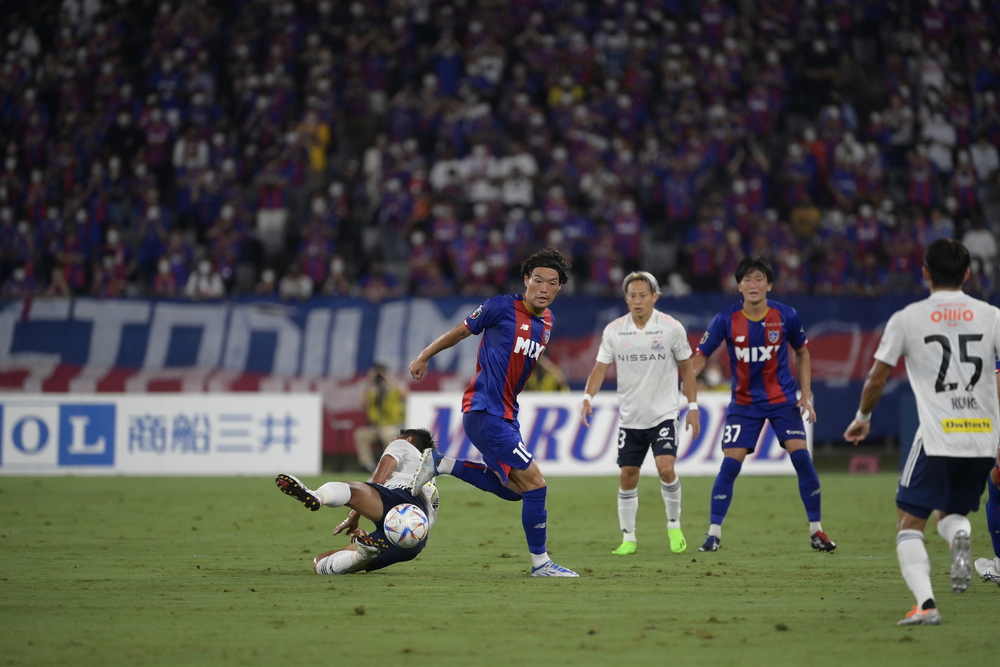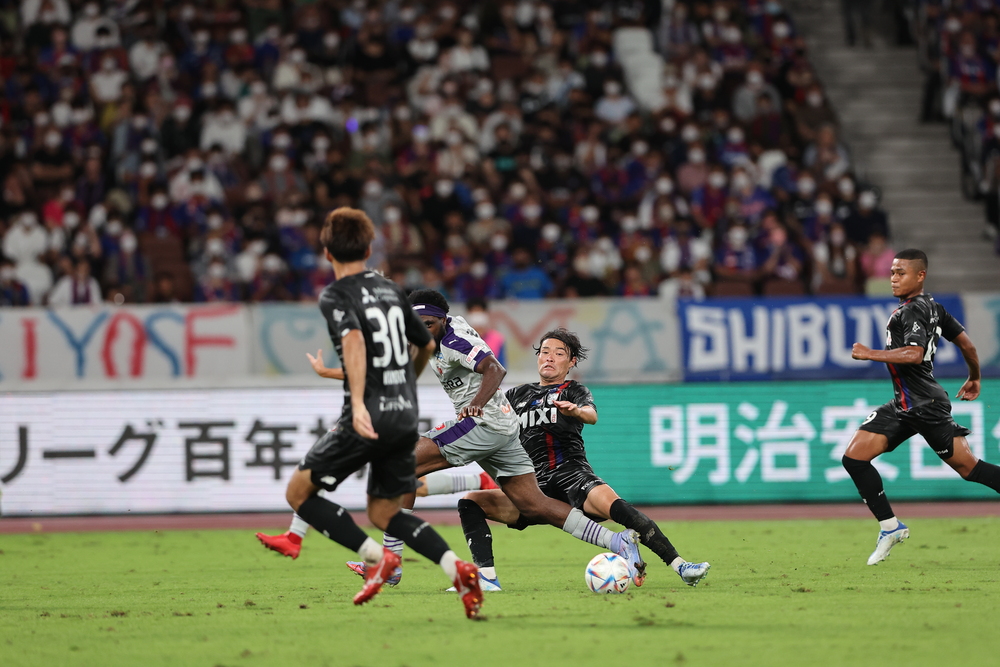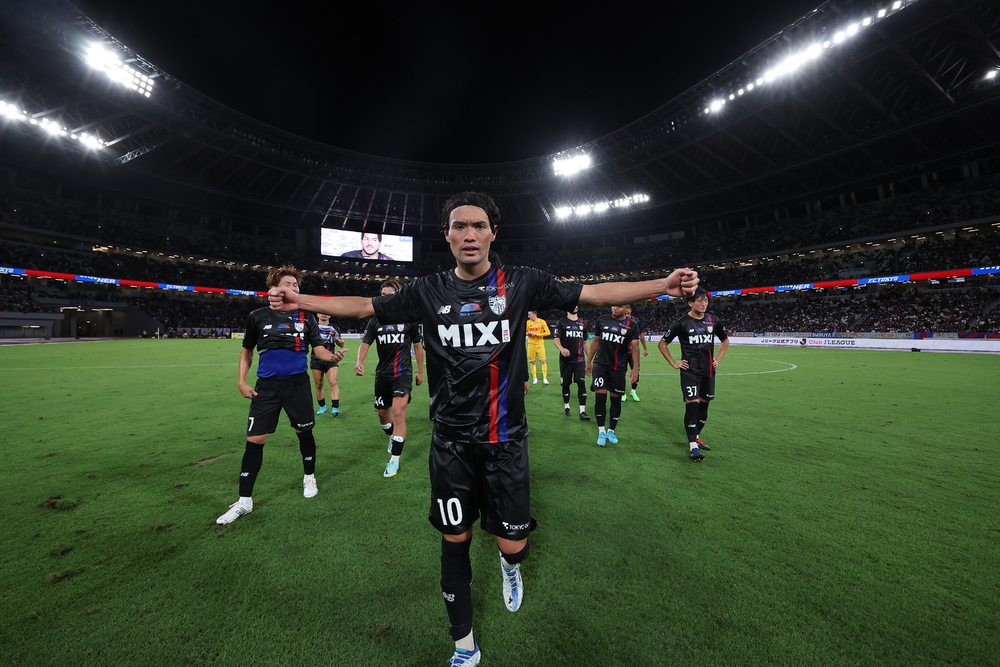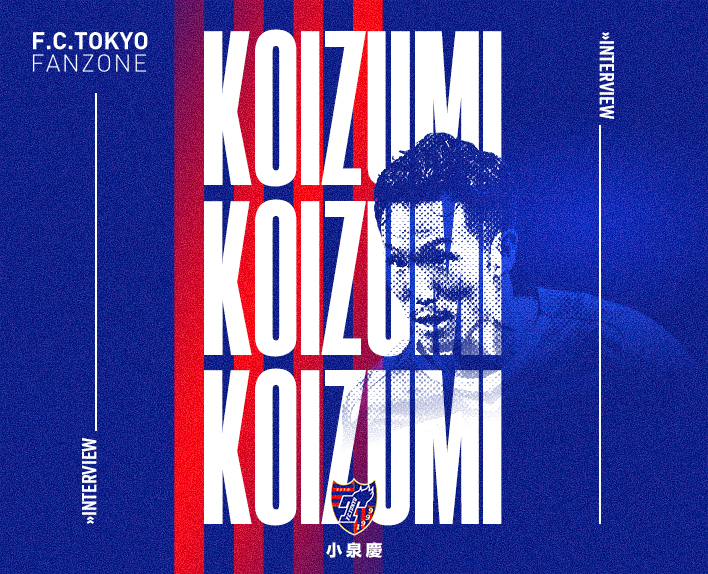In Tokyo, which has embarked on a transformation, Higashi struggled to increase his playing opportunities in the first half of the season. The turning point came in the second half when he was utilized in the anchor position. As Coach Albert PUIG ORTONEDA worked to instill his envisioned style into the team, Higashi played a significant role in an unfamiliar position. After completing his tenth season in Tokyo, what does the man feel about this season of transformation, and what does he see for the future?
View from the New Frontier Anchor
Q: In recent years, Keigo HIGASHI has repeatedly expressed that his most important desire is to win, and that winning is his primary goal.
A, if we don't set that as a fundamental premise, it's the professional world. I don't think the direction we in Tokyo are aiming for is wrong, and I believe we will continue that into next season and beyond, but I also think further work will be necessary in building our style.
Q: You have challenged a different style compared to the era of former coach Kenta HASEGAWA (current coach of Nagoya Grampus) in the first year under coach Albert PUIG ORTONEDA. Have you felt the changes in yourselves once again?
A, I think the style is completely different now. Of course, it's not about which style is correct or incorrect. One thing is certain: what we have been aiming for since 2022 has started to change, and we are in the process of challenging ourselves with new things. Without a doubt, the time the entire team has to settle the ball has increased compared to the first half of the season, and I believe the so-called possession rate has also risen. The coach aims to firmly maintain possession of the ball and has mentioned that 'the best defense is to attack,' so there have been matches where that desired style has clearly emerged in the team's performance. However, we are still quite unstable.
Q: The development of being able to reliably move the ball forward through anchor player Higashi is definitely increasing.
A, of course, the opponent's positioning and system alignment varies from match to match, and that is a position that is greatly affected by it. However, the opportunities to move smoothly have undoubtedly increased. The challenge heading into next season is the accuracy of attacks after entering the opponent's territory. I believe it is the strategy for the area known as the 'last third' leading to the opponent's goal. Of course, in playing soccer, strategizing in that area is the most difficult theme.

Q: This season, as he started playing as an anchor, player Higashi said, "I was a playmaker when I was younger. Playing as an anchor is similar in the sense that you coordinate with teammates all around you."
A, above all, the anchor touches the ball a lot and plays by interacting with various players. I inherently enjoy that kind of play. When I was playing as an attacking midfielder, I was also the type to receive the ball frequently, and creating rhythm was part of my job. In that role, movements to break forward are also necessary. Additionally, incorporating movements to draw defenders for the benefit of teammates is important. Such movements are not present for the anchor. Instead, I had the image of the anchor using awareness and power in defense.
Q: Currently, player Higashi, who is playing as an anchor, doesn't have many opportunities to get involved in the play in the higher areas. While watching the previous attacks, do you think, 'If it were me, I would approach it this way'?
Yes, there are times when you can view the game that way, even while playing. Honestly, playing soccer, that area (in front of the opponent's goal) is the most enjoyable. The spectators also have the highest expectations for the plays that will emerge in that area. The position and role I am currently playing is part of the process leading up to scoring a goal. Personally, I find that fresh and interesting. Certainly, when I was playing as an attacking midfielder, I wasn't a player who scored 10 goals a year, but I was good at movements that allowed my teammates to score and creating chances. I think it would be interesting soccer if the players in Tokyo's attacking positions could show more of those kinds of movements.
Q, it feels like in this new role as an anchor, my perspective and awareness have expanded beyond my usual areas.
I can see things with an open perspective, and I am increasingly able to view the team objectively in a positive way. Conversely, for example, when I am playing as an anchor and it comes to a defensive situation, I discovered that I can read where the opposing player wants to pass and where they want to move. A significant part of my defense is being able to sense the emotions and feelings of the opponent. I defend while thinking, 'So that's where they want to go, they want to pass there,' (laughs).

The future of Keigo HIGASHI and Tokyo
Q: It has been exactly 10 years since I joined FC Tokyo in 2013. How do you feel about the future of your career? Of course, I still want you to continue playing for a long time (laughs).
I want to play until I can compete at the top level. For me now, it's about playing in Tokyo aiming for a title. On the other hand, the club Oita Trinita that raised me is also special, and I am incredibly grateful. Of course, I have the same gratitude towards Omiya Ardija, but my feelings towards Oita, where I started as a football player, are strong. This is why I want everyone to understand that the battle in Tokyo is the most important thing for me right now. There's no point in lying here, so I spoke honestly about my feelings. This is just my personal thought, and whether I return to Oita in the end depends on the circumstances of the other clubs, so I can't predict that. The three years in youth and the first two years as a professional. Now that I am older, I realize how important that time was.
Q: It's not good to make the fans and supporters in Tokyo too sad (laughs), so what does player Higashi want to achieve in this ongoing challenge here?
A, there is only the league title. We won the Levain Cup, but I think the club, the players, and the fans/supporters are only looking at that (winning the league).

Q: With the current soccer style and approach in Tokyo, I realistically want to achieve victory and aim for the league championship. How does player Higashi perceive this?
A, what I think while doing this is that the football style during Massimo FICCADENTI's era, Kenta's era, and now under Albert PUIG ORTONEDA is naturally different, and it is only natural that coaches have various styles. That said, what ultimately decides the outcome is the attention to fine details. No matter what direction or style you have, if you keep conceding the first goal from a set piece or missing critical defensive coverage in dangerous moments, you will never win. I believe this is the level of discussion we are talking about. There are many football styles, but to aim for the championship, the obsession with those details is something every team absolutely must have. This is the part that each player must thoroughly pursue. I feel that Kawasaki Frontale and Yokohama F.Marinos also fight not only with an outwardly aggressive and flashy approach but with meticulous attention to detail in crucial moments. There must be no oversight. I think that transforms into mental toughness. Style is important. But what decides the match and the outcome is not just that.
Q, Player Higashi is responsible for conveying that to the team.
A, young players often do not have that level of awareness. I was the same way. If every team could easily achieve that, everyone would experience victory. However, in the past few years, I have felt the harshness and fear of the moments when the outcome is decided. I want to play in matches at that level again. It's about competing for the championship. This connects to what Kenta-san said about 'paying attention to the details.' Without that, you can't win just by building a style. It's about how to increase players who elevate their individual awareness. When considering victory, I think the current awareness of Tokyo's players is still insufficient.
Q, the sensitive experiences from Kenta's era are also alive in player Higashi himself, and the team must carry that forward.
Yes, that's right. During Kenta's era, we couldn't win the league despite being so particular about the details. Of course, there may have been a lack of commitment, but if we aim for the championship from here, it would be great if the young players also feel a sense of urgency, and if the team can align in terms of intensity, it will become a good team, a strong team. That's what I think.
Q: Although player Higashi is no longer the captain, his perspective on soccer and competition remains unchanged, regardless of titles.
I really want to win. In the past, I only cared about my own performance. Now, I play to win. That's why I expect the same from those around me. We play soccer to win. That is my biggest motivation. So honestly, the style doesn't matter (laughs). Winning in Tokyo is my only true desire.
Q: Nowadays, Keigo HIGASHI's victory pose is exhilarating. It's precisely because he is so eager to win.
A, the taste of a single victory is strong. Consequently, the damage from a loss is significant. To win the championship, it's all about accumulating one victory after another. With that one victory, we couldn't reach the top in the 2019 season. It all comes down to one play and attention to detail. I believe this is the essence of it.

Text by Yuuki Nishikawa (El Golasso)
![[2022シーズンレビュー]<br />
東慶悟選手インタビュー](/en/upload/Tokyoism/images/detail_img_320_63759038-eaa0-48a9-81c1-21790a000292.jpg)



![[2022 Season Review] Masato MORISHIGE Interview](/en/upload/Tokyoism/images/img_319_636e1b53-2d00-4feb-8a3b-2c4d0a000292.jpg)
